Tinea pedis ringworm. Tinea Pedis: Causes, Symptoms, and Treatment of Athlete’s Foot
What are the main causes of tinea pedis. How does athlete’s foot present clinically. What are the most effective treatments for foot ringworm. How can tinea pedis be prevented.
Understanding Tinea Pedis: The Fungal Infection of the Feet
Tinea pedis, commonly known as athlete’s foot or foot ringworm, is a prevalent fungal infection that affects the feet, primarily targeting the soles, interdigital spaces between toes, and occasionally the toenails. This condition is caused by dermatophyte fungi, with Trichophyton rubrum being the most common culprit, accounting for approximately 70% of cases. Other fungi such as Trichophyton interdigitale and Epidermophyton floccosum can also cause tinea pedis.
The infection thrives in warm, moist environments, making feet particularly susceptible due to the enclosed nature of shoes and the tendency for feet to perspire. Understanding the nature of this fungal infection is crucial for effective prevention and treatment.
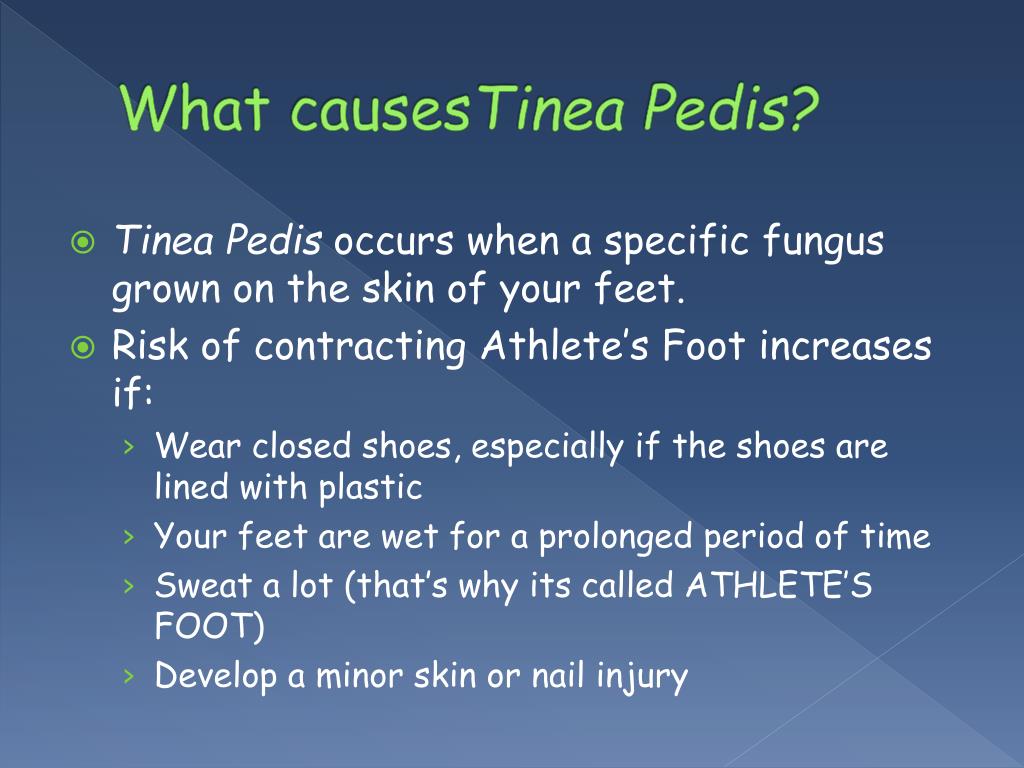
Epidemiology and Risk Factors of Athlete’s Foot
Tinea pedis affects about 10% of the general population, with a higher prevalence among adult males. The average age of onset is around 15 years. Several factors contribute to the increased risk of developing athlete’s foot:
- Hot and humid environments
- Prolonged wear of occlusive footwear
- Excessive sweating
- Extended exposure to water
- Use of communal facilities such as showers, pools, and locker rooms
Why is tinea pedis more common in certain populations? The increased incidence in adult males and those who frequently use communal facilities is largely due to lifestyle factors that create ideal conditions for fungal growth. Athletes, soldiers, and individuals who wear occlusive footwear for extended periods are particularly at risk.
The Pathophysiology of Foot Ringworm
The development of tinea pedis involves a complex interplay between the fungal pathogen and the host environment. The dermatophyte fungi responsible for athlete’s foot possess specific adaptations that allow them to invade and thrive in the keratin-rich layers of the skin:

- Keratinase production: These fungi release enzymes called keratinases, which break down keratin, the main structural protein in the skin’s outer layer.
- Mannan molecules: The fungal cell wall contains mannans, which suppress the body’s immune response, allowing the infection to establish and persist.
- Environmental factors: Occlusion of toe clefts, skin maceration, and increased bacterial flora contribute to the infection’s development.
How do these fungi evade the body’s defenses? The combination of keratinase production and immune suppression by mannans creates a favorable environment for fungal growth, allowing the infection to persist despite the body’s natural defense mechanisms.
Clinical Presentation and Types of Tinea Pedis
Tinea pedis can present in several distinct forms, each with its unique characteristics:
1. Chronic Intertriginous Type
This is the most common presentation, characterized by:
- Long-standing, itchy dermatitis between toes
- Peeling, maceration, and fissuring of affected areas
- Erythema covered with fine, silvery white scales
- Involvement of lateral toe clefts and undersurface of toes
2. Chronic Hyperkeratotic (Moccasin) Type
This form presents as:
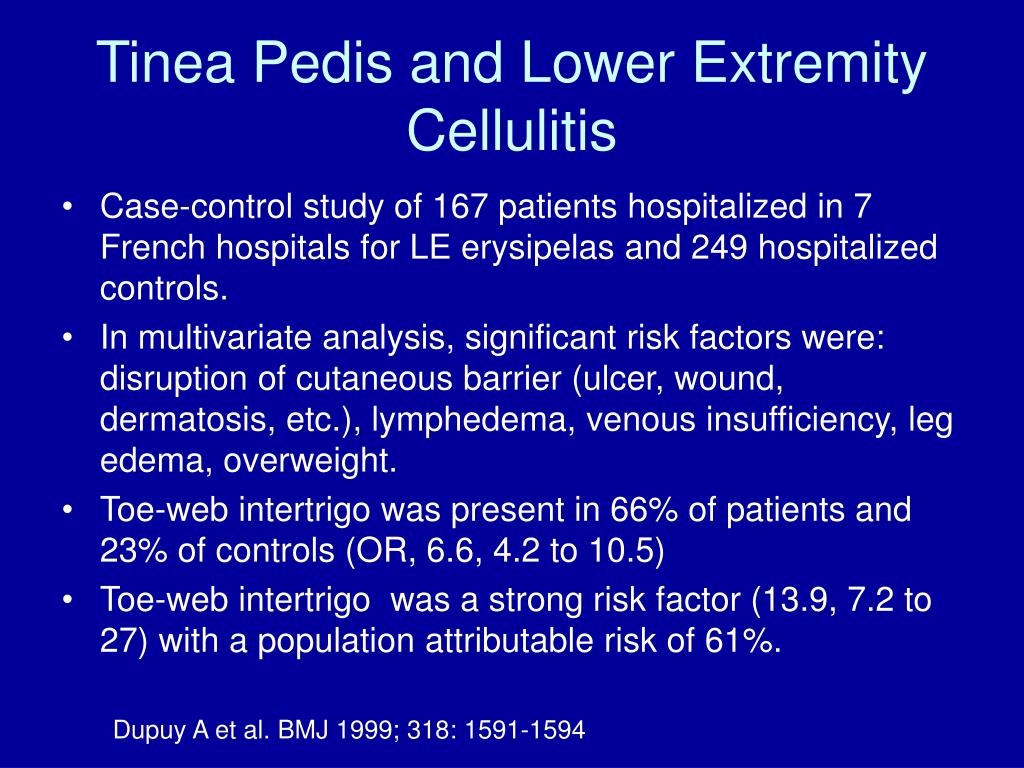
- Patchy or diffuse scaling on the bottom, medial, and lateral sides of the soles
- A moccasin-like distribution of the infection
3. Vesiculobullous Form
Typically caused by Trichophyton mentagrophytes, this type is characterized by:
- Tense vesicles or bullae over the soles
- Intense burning and itching sensation
- Significant discomfort for the patient
4. Acute Ulcerative Type
This severe form can occur when there’s an associated bacterial infection, leading to:
- Ulceration of the affected areas
- Increased risk of complications
Which type of tinea pedis is most likely to lead to complications? The acute ulcerative type, due to the potential for secondary bacterial infections, poses the highest risk for complications and may require more aggressive treatment.
Diagnosis and Evaluation of Athlete’s Foot
While the physical examination is often sufficient for diagnosing tinea pedis, confirmation through laboratory methods can be valuable, especially in atypical cases. The diagnostic process typically involves:
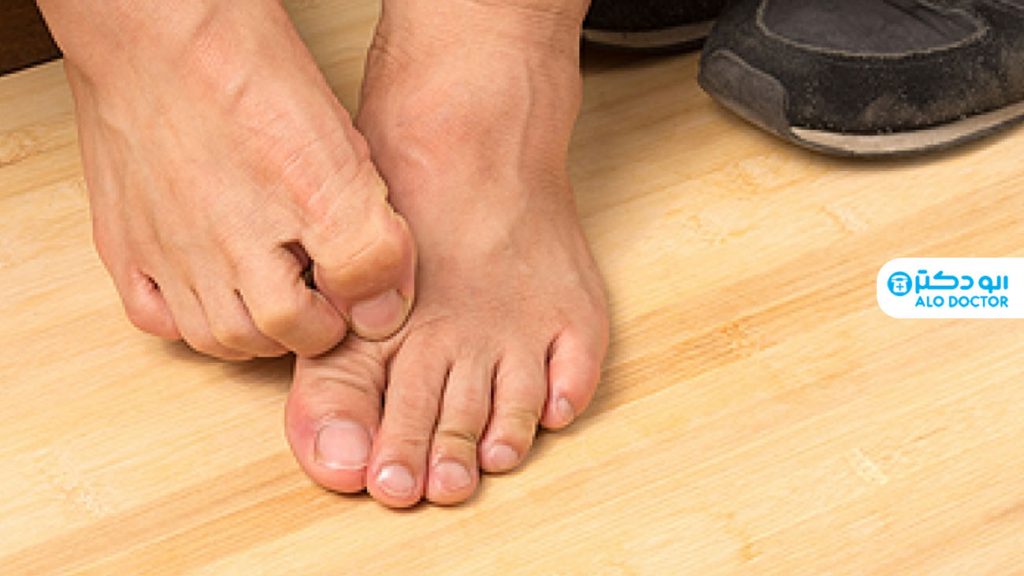
- Clinical examination: Identifying characteristic signs and symptoms
- Microscopy: Examining skin scrapings under a microscope
- Culture: Growing the fungus to identify the specific species
The microscopic examination process involves:
- Collecting dry scales from the instep, heel, and sides of the foot
- Unroofing bullae in vesiculobullous cases
- Adding 10-20% potassium hydroxide (KOH) solution to the sample
- Optionally adding 20-40% Dimethyl sulfoxide (DMSO) to speed up keratin clearing
- Examining the prepared slide under a microscope
How does microscopic examination aid in diagnosis? This method allows for direct visualization of fungal elements, providing rapid confirmation of the infection and guiding treatment decisions.
Treatment Strategies for Tinea Pedis
The management of tinea pedis typically involves a combination of topical and, in severe cases, oral antifungal medications. The choice of treatment depends on the severity and type of infection:
Topical Treatments
- Azole antifungals (e.g., clotrimazole, miconazole)
- Allylamine antifungals (e.g., terbinafine)
- Ciclopirox olamine
- Tolnaftate
Oral Medications
For severe or resistant cases, oral antifungals may be prescribed:

- Terbinafine
- Itraconazole
- Fluconazole
Which treatment option is most effective for chronic tinea pedis? Oral terbinafine has shown high efficacy in treating chronic cases, particularly those caused by Trichophyton rubrum. However, the choice of treatment should be tailored to the individual patient and the specific characteristics of their infection.
Prevention and Long-term Management of Foot Ringworm
Preventing recurrence and managing tinea pedis long-term involves a multifaceted approach:
- Maintain dry feet: Use absorbent socks and change them frequently
- Choose breathable footwear: Opt for shoes that allow air circulation
- Use antifungal powders: Apply regularly to shoes and feet
- Practice good foot hygiene: Wash and dry feet thoroughly, especially between toes
- Avoid walking barefoot in public areas: Use sandals in communal showers and locker rooms
- Treat all infected family members: Prevent reinfection within households
- Disinfect shoes: Use antifungal sprays or UV shoe sanitizers
How can individuals with recurrent tinea pedis break the cycle of infection? Combining consistent antifungal treatment with rigorous preventive measures is key. This may include rotating shoes to allow them to dry completely between uses, using antifungal powders prophylactically, and addressing any underlying conditions that may increase susceptibility to fungal infections.

The Role of the Interprofessional Team in Managing Tinea Pedis
Effective management of tinea pedis often requires a collaborative approach involving various healthcare professionals:
- Dermatologists: For diagnosis and treatment of complex or resistant cases
- Primary care physicians: For initial diagnosis and management
- Podiatrists: To address any concurrent foot conditions or complications
- Pharmacists: To provide guidance on medication use and potential interactions
- Nurses: For patient education and follow-up care
Why is an interprofessional approach beneficial in managing tinea pedis? This collaborative model ensures comprehensive care, addressing not only the fungal infection but also any underlying factors or concurrent conditions that may affect treatment outcomes. It allows for better patient education, improved adherence to treatment plans, and more effective long-term management strategies.
The interprofessional team can work together to:
- Develop customized treatment plans
- Monitor treatment efficacy and adjust as needed
- Provide patient education on prevention and self-care
- Address any complications or associated conditions
- Ensure proper follow-up and long-term management
How can healthcare providers improve patient outcomes in tinea pedis cases? By fostering open communication between team members, ensuring consistent messaging to patients, and tailoring interventions to individual patient needs and circumstances, healthcare providers can significantly enhance the effectiveness of tinea pedis management.
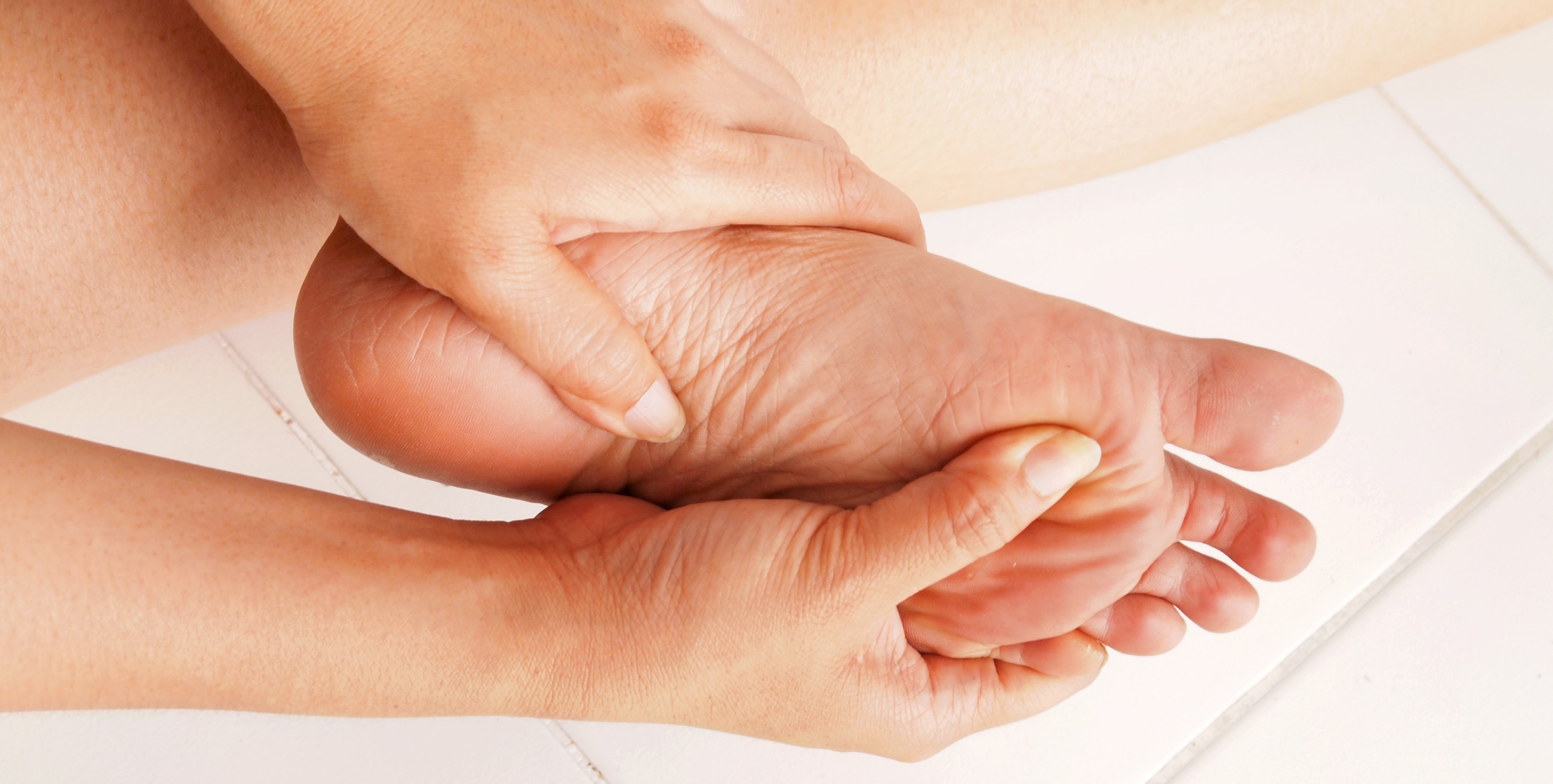
Emerging Research and Future Directions in Tinea Pedis Treatment
As with many medical conditions, research into tinea pedis continues to evolve, offering new insights and potential treatment options:
- Novel antifungal agents: Research into new compounds with improved efficacy and safety profiles
- Nanotechnology-based treatments: Development of nanoparticle-based antifungal formulations for enhanced skin penetration
- Probiotics: Investigating the potential of beneficial microorganisms in preventing and treating fungal infections
- Immunomodulatory approaches: Exploring ways to enhance the body’s natural defenses against fungal infections
- Combination therapies: Studying the synergistic effects of combining different treatment modalities
What promising developments are on the horizon for tinea pedis treatment? Nanotechnology-based treatments show particular promise, as they may allow for better penetration of antifungal agents into the deeper layers of the skin, potentially improving treatment efficacy and reducing the duration of therapy.
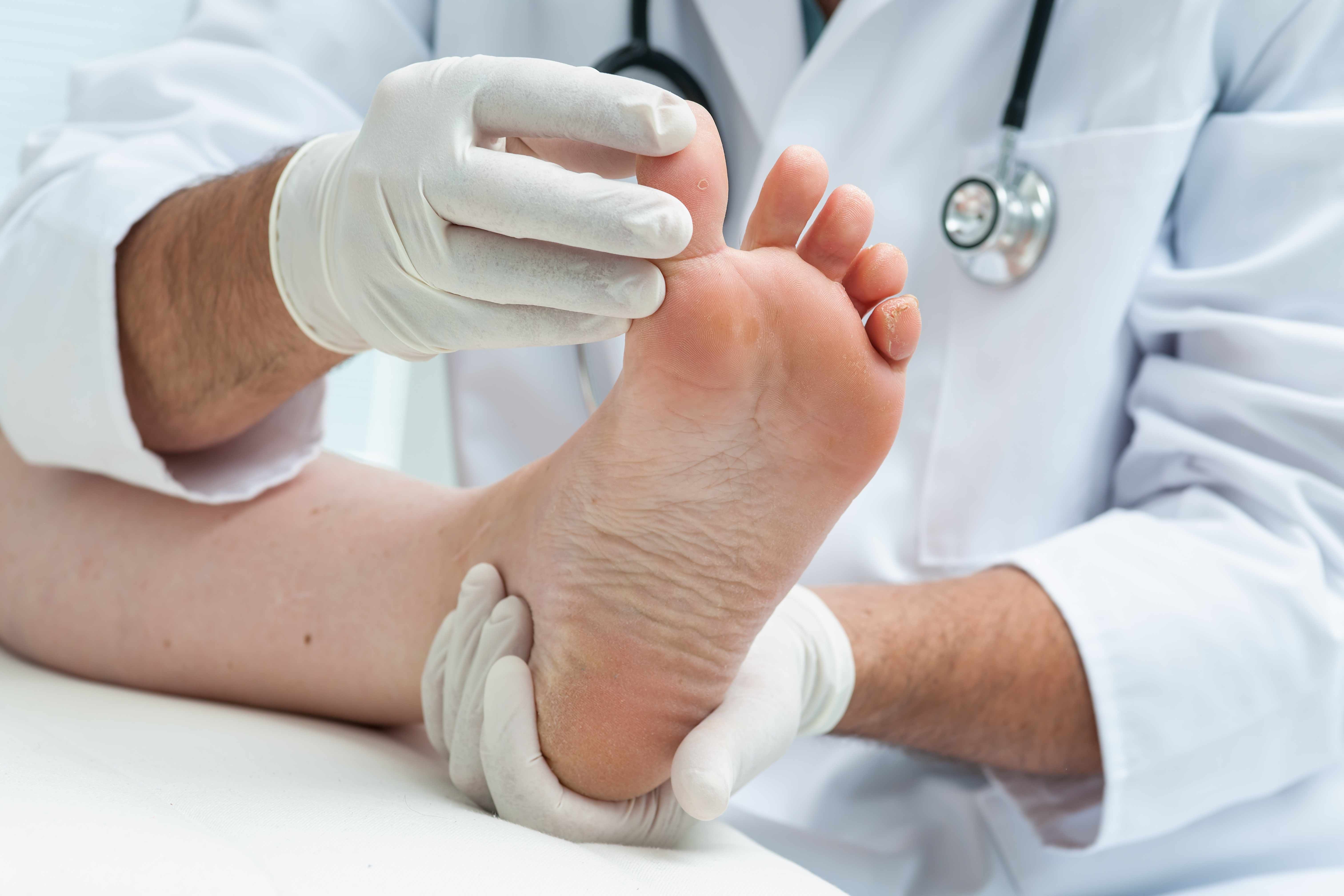
Additionally, research into the skin microbiome and its role in fungal infections may lead to new preventive strategies and treatments. Understanding the complex interactions between fungi, bacteria, and the host immune system could open up novel avenues for managing tinea pedis and other fungal skin infections.
The Impact of Tinea Pedis on Quality of Life
While often considered a minor condition, tinea pedis can significantly impact an individual’s quality of life:
- Physical discomfort: Itching, burning, and pain can affect daily activities
- Psychological impact: Embarrassment and self-consciousness about foot appearance or odor
- Social implications: Reluctance to engage in activities involving bare feet
- Occupational challenges: Discomfort and reduced productivity in jobs requiring prolonged standing or foot exposure
How can healthcare providers address the quality of life issues associated with tinea pedis? A holistic approach that considers both the physical and psychological aspects of the condition is crucial. This may include:

- Prompt and effective treatment to alleviate symptoms
- Patient education on self-care and prevention to empower individuals
- Addressing any underlying anxiety or self-esteem issues related to the condition
- Providing resources for coping with chronic or recurrent infections
- Suggesting lifestyle modifications to minimize the impact on daily activities
By acknowledging and addressing these quality of life concerns, healthcare providers can improve patient satisfaction and treatment adherence, ultimately leading to better outcomes in the management of tinea pedis.
Tinea Pedis – StatPearls – NCBI Bookshelf
Continuing Education Activity
Tinea pedis, also known as athlete’s foot or foot ringworm is an infection of the feet affecting soles, interdigital clefts of toes, and nails with a dermatophyte fungus. This activity reviews the evaluation and management of tinea pedis and highlights the role of interprofessional team members in collaborating to provide well-coordinated care and enhance patient outcomes.
Objectives:
Identify individuals at high risk for tinea pedis.
Describe the classic presentation of tinea pedis.
Identify management strategies for tinea pedis.
Outline the importance of enhancing care coordination among the interprofessional team to ensure proper evaluation and management of tinea pedis.
Access free multiple choice questions on this topic.
Introduction
Tinea pedis or foot ringworm is an infection of the feet affecting soles, interdigital clefts of toes, and nails with a dermatophyte fungus. It is also called athlete’s foot.[1][2][3] The infection is caused by the dermatophyte, Trichophyton rubrum which was once endemic to many parts of Africa, Asia, and Australia. However, today the organism can be found in Europe and the Americas.
It is also called athlete’s foot.[1][2][3] The infection is caused by the dermatophyte, Trichophyton rubrum which was once endemic to many parts of Africa, Asia, and Australia. However, today the organism can be found in Europe and the Americas.
Etiology
Mainly, Trichophyton rubrum causes tinea pedis. Trichophyton interdigitale and Epidermophyton floccosum are also involved. Other occasional agents include Tricholosporum violaceum. T. rubrum accounts for about 70% of the cases.[4][5]
Risk factors include:
A hot and humid environment
Prolonged wear of occlusive footwear
Excess sweating
Prolonged exposure to water
Epidemiology
About 10% of the total population may be affected by dermatophyte infections of the toe clefts. It is mostly attributed to wearing of occlusive shoes for long periods. Sharing washing facilities is likely to increase the chances of infection as the incidence of tinea pedis is observed to be higher among those using community baths, showers, and pools.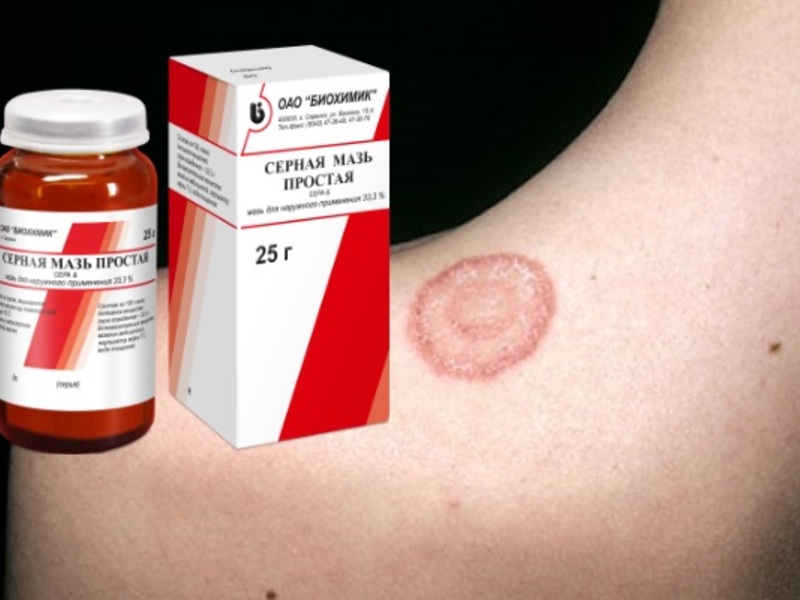 The condition is more common in adult males than in females. The mean age of onset was 15 years in one study.[4][6]
The condition is more common in adult males than in females. The mean age of onset was 15 years in one study.[4][6]
Pathophysiology
Occlusion of toe clefts, maceration, and wet conditions with a simultaneous increase in the bacterial flora probably contribute to tinea pedis infection. Skin breakdown, humidity, and temperature play a role in this infection. The fungus released enzymes called keratinases to invade the keratin layer of skin. In addition, the dermatophyte cell wall also contains molecules called mannans which suppress the body’s immune response.
Histopathology
Histologically, it is characterized by acanthosis, hyperkeratosis, and a sparse, superficial, perivascular infiltrate in the dermis. The vesiculobullous form shows spongiosis and parakeratosis. Staining with PAS or methenamine silver stain demonstrates fungal filaments.
History and Physical
The patients with tinea pedis mostly present as a long-standing, itchy, intertriginous dermatitis of the toes characterized by peeling, maceration, and fissuring.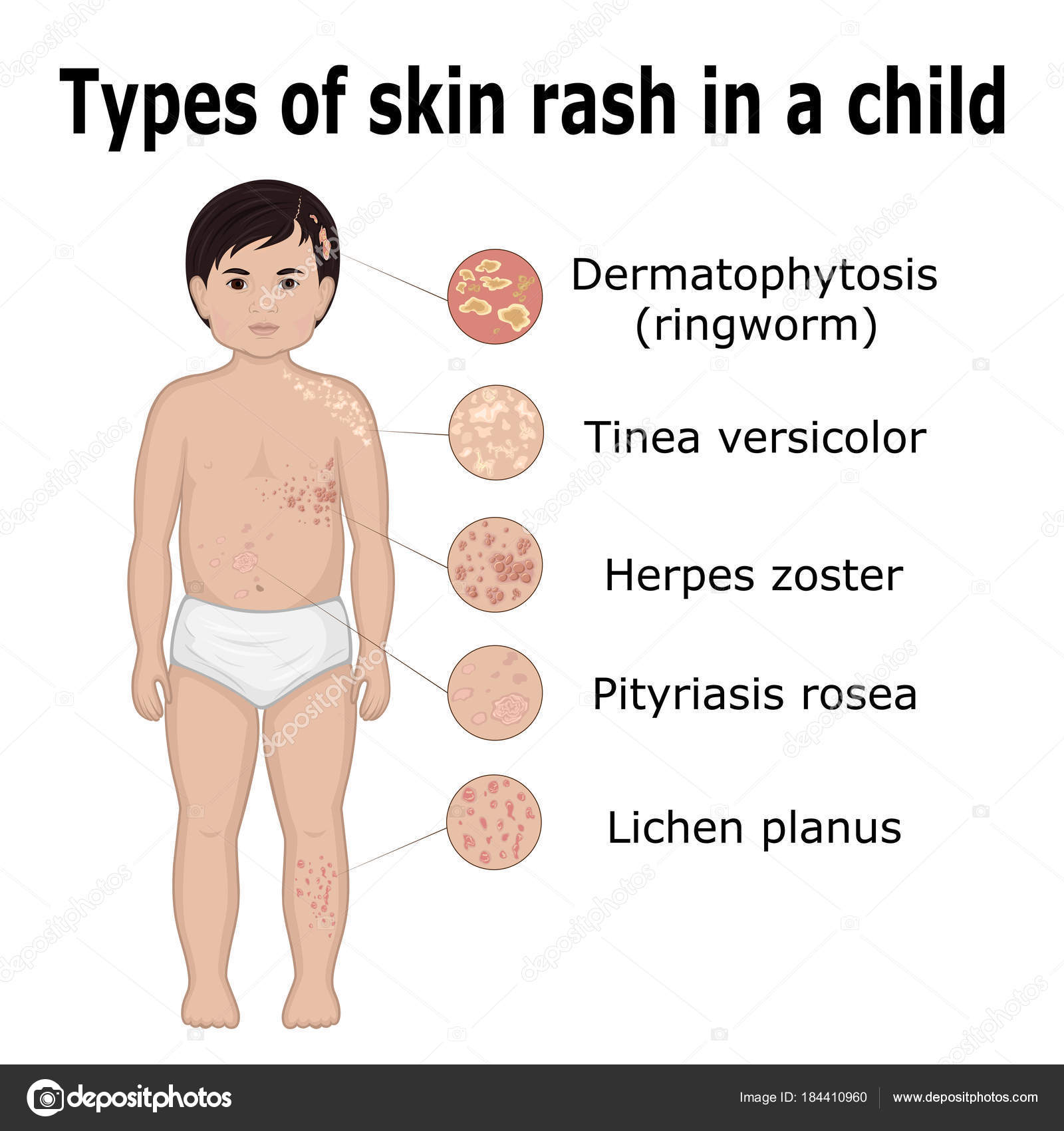 Lateral toe clefts are mainly affected by the involvement of the under the surface of the toes. The affected areas are erythematous and covered with fine, silvery white scales. Occasionally, a pompholyx like the vesicular eruption of the sole may be present. Chronic intertriginous type is the most common presentation. It begins as scaling, maceration, erosion, and erythema of the interdigital and subdigital skin of the feet. Pruritus and malodor are present. Chronic hyperkeratotic or moccasin type usually presents with patchy or diffuse scaling of the bottom, medial, and lateral sides of the soles. The vesiculobullous form is typically caused by Trichophyton mentagrophytes and present as tense vesicles or bullae over the soles. The burning and itching caused by bullae may produce great discomfort. Sometimes, the associated bacterial infection may result in an acute ulcerative type of tinea pedis.
Lateral toe clefts are mainly affected by the involvement of the under the surface of the toes. The affected areas are erythematous and covered with fine, silvery white scales. Occasionally, a pompholyx like the vesicular eruption of the sole may be present. Chronic intertriginous type is the most common presentation. It begins as scaling, maceration, erosion, and erythema of the interdigital and subdigital skin of the feet. Pruritus and malodor are present. Chronic hyperkeratotic or moccasin type usually presents with patchy or diffuse scaling of the bottom, medial, and lateral sides of the soles. The vesiculobullous form is typically caused by Trichophyton mentagrophytes and present as tense vesicles or bullae over the soles. The burning and itching caused by bullae may produce great discomfort. Sometimes, the associated bacterial infection may result in an acute ulcerative type of tinea pedis.
Evaluation
The physical exam is usually sufficient to identify tinea pedis. The diagnosis of tinea pedis may be confirmed by microscopy and culture of skin scrapings. Demonstration of the fungus by microscopic examination of the scrapings taken from the involved site establishes the diagnosis. Dry scales from the instep, heel, and sides of the foot can be gathered by scraping with the edge of a glass microscope slide. Bullae should be unroofed and either the entire roof-mounted intact or scrapings made from the underside of the roof. A few drops of a 10% to 20% solution of potassium hydroxide (KOH) are added to the material on the glass slide. A coverslip is placed over the specimen and examined under the microscope. The addition of 20% to 40% Dimethyl sulfoxide (DMSO) speeds clearing of keratin without the need for heating. A staining method using 100 mg of chlorazol black E dye in 10 mL of DMSO and adding it to a 5% aqueous solution of KOH can be helpful. Toluidine blue, 0.1%, can also be used on thin specimens. The mycelia may be seen under low power, but better observation of both hyphae and spores is obtained by the use of 10 times objective in a microscope.
The diagnosis of tinea pedis may be confirmed by microscopy and culture of skin scrapings. Demonstration of the fungus by microscopic examination of the scrapings taken from the involved site establishes the diagnosis. Dry scales from the instep, heel, and sides of the foot can be gathered by scraping with the edge of a glass microscope slide. Bullae should be unroofed and either the entire roof-mounted intact or scrapings made from the underside of the roof. A few drops of a 10% to 20% solution of potassium hydroxide (KOH) are added to the material on the glass slide. A coverslip is placed over the specimen and examined under the microscope. The addition of 20% to 40% Dimethyl sulfoxide (DMSO) speeds clearing of keratin without the need for heating. A staining method using 100 mg of chlorazol black E dye in 10 mL of DMSO and adding it to a 5% aqueous solution of KOH can be helpful. Toluidine blue, 0.1%, can also be used on thin specimens. The mycelia may be seen under low power, but better observation of both hyphae and spores is obtained by the use of 10 times objective in a microscope.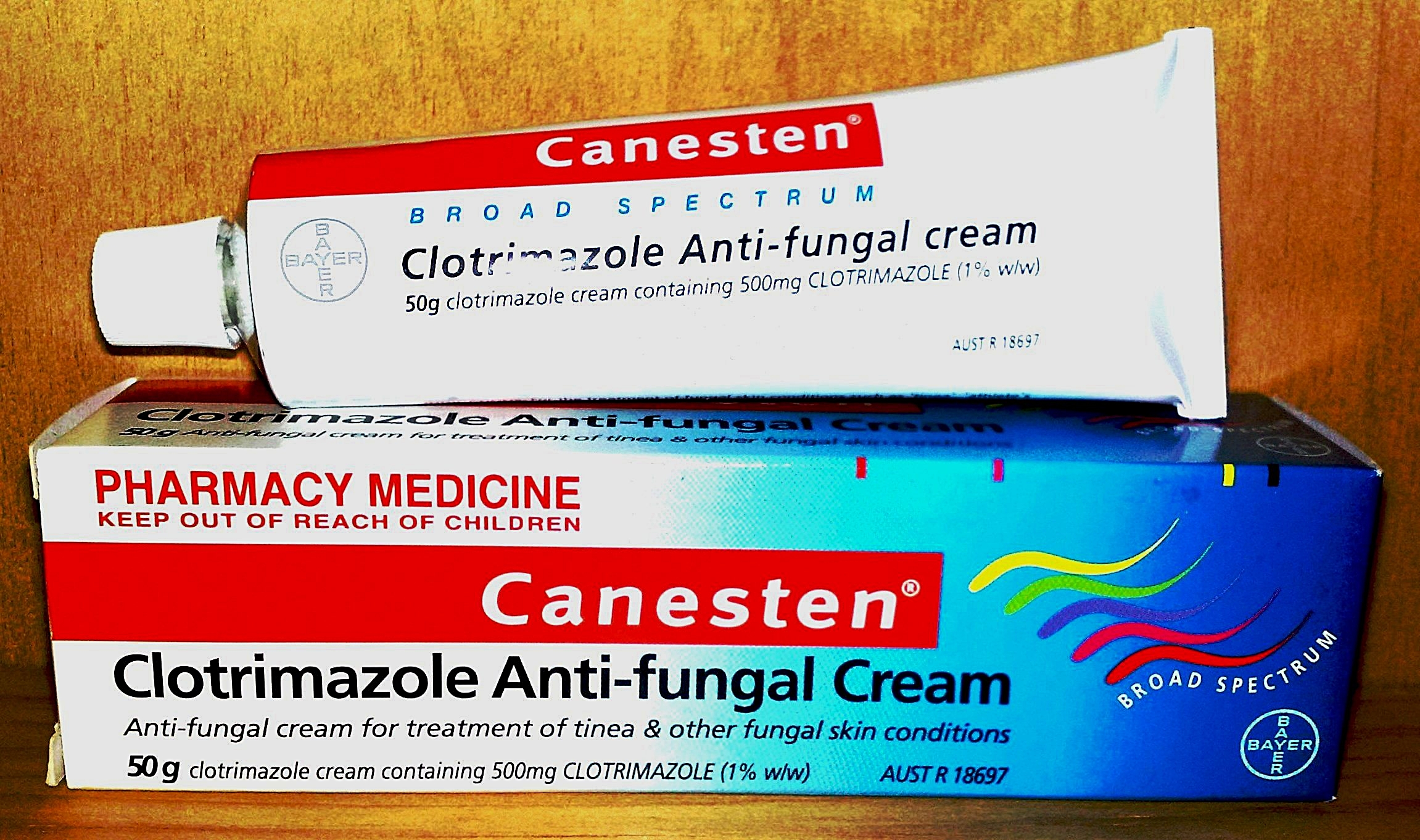 [2][7][8]
[2][7][8]
Treatment / Management
Improvement of hygiene in swimming pools and bathing areas and frequent washing and cleaning of changing room floors and walkways may help in controlling the infection. Topical treatment is usually adequate for the management in most of the patients. Magenta paint (Castellani’s paint) is still used in some cases of inflammatory tinea pedis, particularly with a coexisting bacterial infection. Topical imidazoles such as clotrimazole, econazole, ketoconazole, miconazole, isoconazole, tioconazole, and sulconazole are effective remedies in tinea pedis with the very low incidence of adverse reactions. Terbinafine and amorolfine applied topically have been shown to produce faster responses as compared to clotrimazole in tinea pedis. The use of tolnaftate powder at swimming baths prophylactically has been shown to reduce levels of toe cleft tinea pedis caused by T. interdigitale. The period of therapy depends on the response of the lesions. Repeated KOH scrapings and cultures should be negative.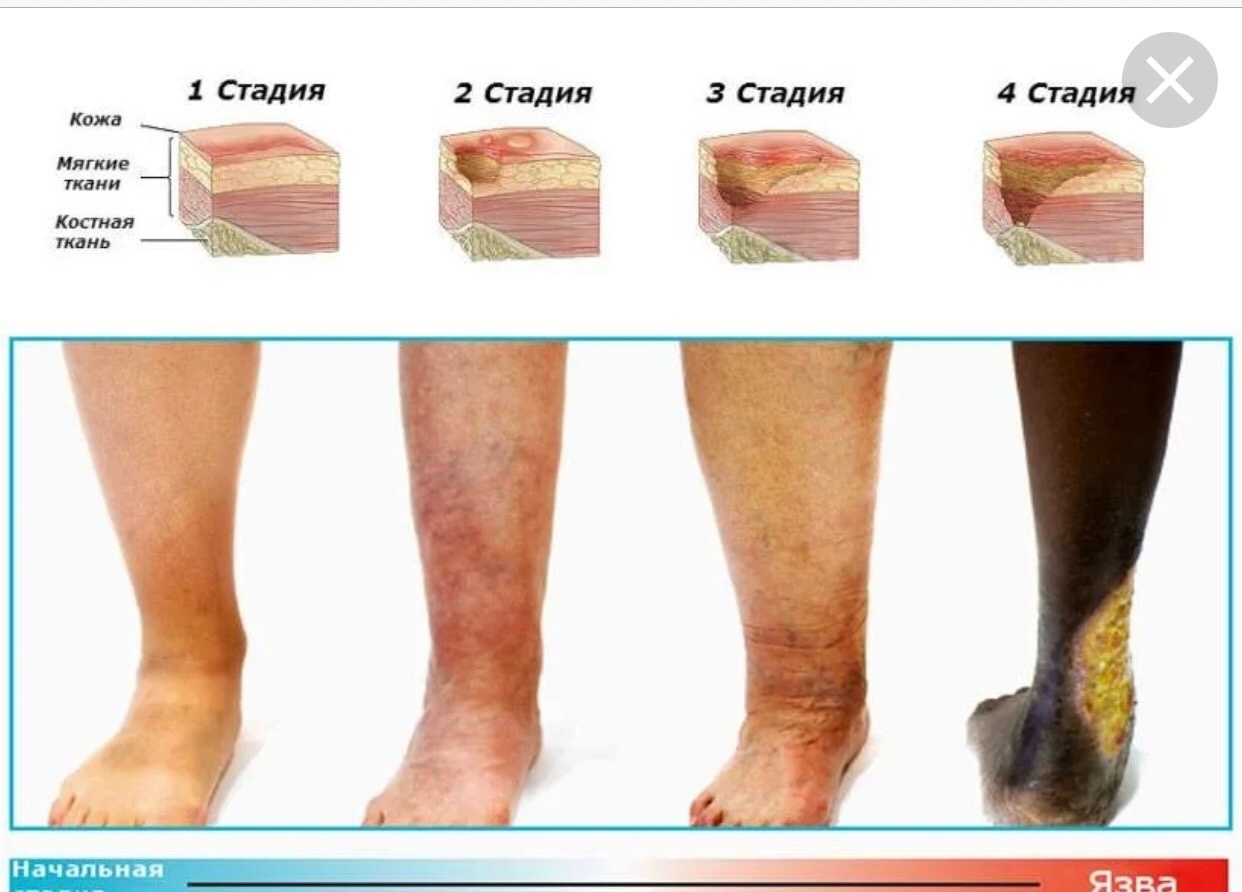 Much shorter courses are possible with newer antifungal agents.[9][10][11]
Much shorter courses are possible with newer antifungal agents.[9][10][11]
Systemic treatment is needed, only if there is involvement of the dorsum of foot, heel, sole of the foot or if the infection is recurrent or has blisters [10]. For adults, terbinafine given orally in a dosage of 250 mg/day produces rapid and long-lasting remissions. Itraconazole, an orally active azole of the triazole series acting through the inhibition of the cytochrome P450-dependent demethylation stage in the formation of ergosterol on the fungal cell membrane is effective in regimens of 200 mg/day for 30 days. Fluconazole is given in a regimen of 150 mg/week for a longer duration. Griseofulvin 500 to 1000 mg/day may also be used. For children, griseofulvin, 10 to 20 mg/kg/day or itraconazole 5 mg/kg/day may be used. Pulse therapy with itraconazole one week/ month is also effective.
Gastrointestinal side effects may occur with fluconazole but are uncommon. Itraconazole may cause gastrointestinal upsets, diarrhea, and peripheral edema, especially when used in conjunction with calcium channel blockers. Hepatotoxicity occurs at a much lower rate with fluconazole and itraconazole as compared to ketoconazole. Terbinafine also produces gastrointestinal upsets, and rarely, hepatitis.
Hepatotoxicity occurs at a much lower rate with fluconazole and itraconazole as compared to ketoconazole. Terbinafine also produces gastrointestinal upsets, and rarely, hepatitis.
Differential Diagnosis
Hyperkeratotic lesions should be differentiated from psoriasis and heredity or acquired keratodermas.
Interdigital lesions should be differentiated from psoriasis, erythrasma, soft corns, and candidiasis.
Vesiculobullous lesions should be differentiated from pustular psoriasis and dyshidrosis.
Reiter syndrome
Interdigital tinea must be distinguished from simple maceration caused by a closed web space and gram-negative toe web infection.
Prognosis
Prognosis is good provided preventive precautions be taken. Hyperhidrosis is a predisposing factor for tinea infections. Because the disease often starts on the feet, the patient should be advised to dry the toes thoroughly after bathing. Dryness of the parts is essential if reinfection is to be avoided.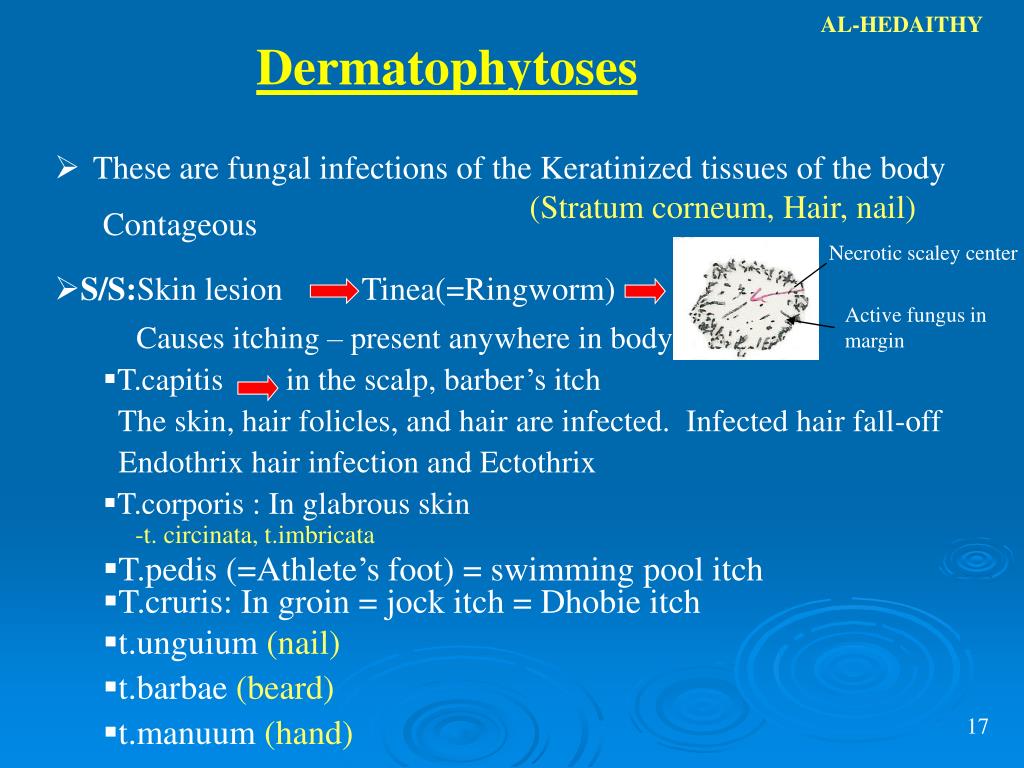 The use of a good antiseptic powder on the feet after bathing, particularly between the toes, is strongly advised for keeping the part dry in susceptible persons. Tolnaftate or clotrimazole powder is an excellent dusting powder for the feet. Plain talc may be dusted onto socks and shoes to keep the feet dry. Periodic use of a topical antifungal agent may be required, especially when hot occlusive footwear is worn.
The use of a good antiseptic powder on the feet after bathing, particularly between the toes, is strongly advised for keeping the part dry in susceptible persons. Tolnaftate or clotrimazole powder is an excellent dusting powder for the feet. Plain talc may be dusted onto socks and shoes to keep the feet dry. Periodic use of a topical antifungal agent may be required, especially when hot occlusive footwear is worn.
Complications
Cellulitis
Pyoderma
Lymphangitis
Osteomyelitis
In general, complications are more likely to occur in patients who are immunocompromised or are non-ambulatory
Consultations
Internal Medicine
Dermatologist
Deterrence and Patient Education
Maintain clinical hygiene. Avoid walking barefoot.
Pearls and Other Issues
Frequent hosing of the floors of shower rooms and the sides of swimming pools reduce the prevalence of dermatophytes on these surfaces and use of topical antifungal powder, such as tolnaftate, may result in a reduction of tinea pedis infection.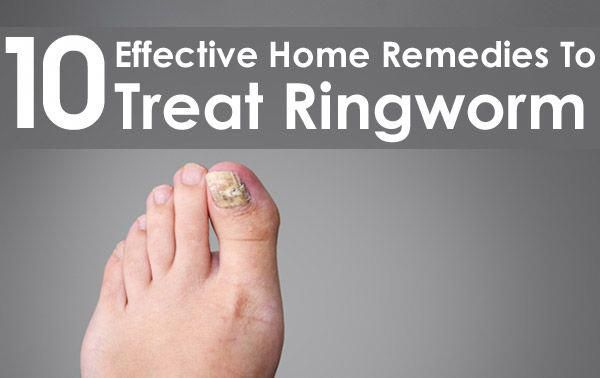 Diabetic patients with tinea pedis are more likely to develop onychomycosis. The presence of interdigital tinea pedis is a risk factor for cellulitis in patients with lymphoedema.
Diabetic patients with tinea pedis are more likely to develop onychomycosis. The presence of interdigital tinea pedis is a risk factor for cellulitis in patients with lymphoedema.
Enhancing Healthcare Team Outcomes
Tinea pedis is a very common infection worldwide and is commonly encountered by the general healthcare professional. While the acute condition is managed by the physician, the focus today is on prevention. To lower the morbidity, the infection is best managed by an interprofessional team
Both the nurse and pharmacist need to educate the patient on the potential for reinfection if lifestyle changes are not undertaken. The old shoes should be discarded, and one should avoid sharing personal care items. At the swimming pool or sauna, protective footwear should be worn. The feet should be left dry, and one should avoid wearing constrictive shoes which lack aeration. Cotton socks are preferred, and one may add a drying antifungal powder if the feet are constantly perspiring.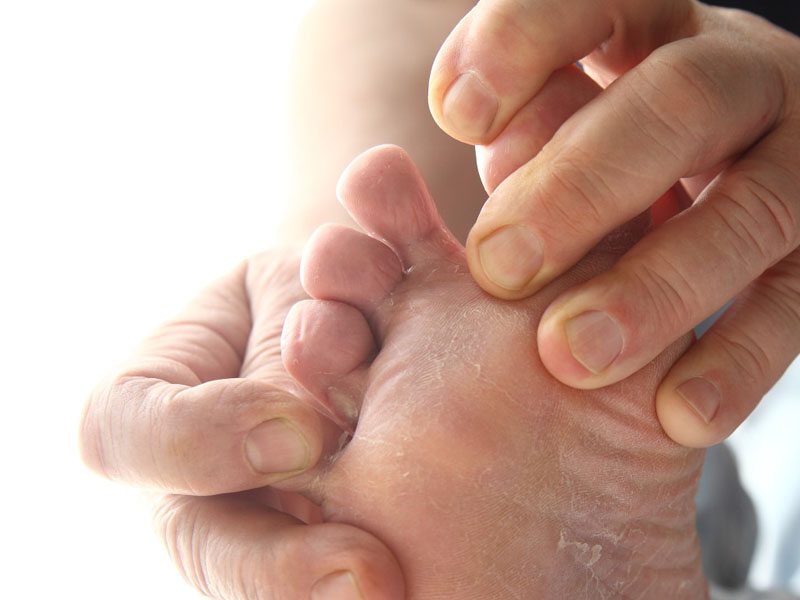 Open communication between team members is important to avoid the morbidity of the infection. [12][13] (Level V)
Open communication between team members is important to avoid the morbidity of the infection. [12][13] (Level V)
Outcomes
For the majority of healthy people, once treatment is started outcomes are excellent. Most people see symptoms relief in a few days and full recovery in 7-14 days. However, in patients who are hemiplegic or immunocompromised, the tinea infection can be associated with cellulitis or even pyoderma. [14][15](Level V)
Review Questions
Access free multiple choice questions on this topic.
Comment on this article.
Figure
Tinea Pedis. Contributed by DermNetNZ
Figure
Rash, Tinea Pedis, Ringworm of the foot, dermatophytic fungal organism, Skin diseases, infectious, dermatomycoses. Contributed by The Centers for Disease Control and Prevention
Figure
Tinea pedis. Contributed by Pramod Kumar Nigam
Figure
Tinea pedis- plantar xerosis in a moccasin pattern.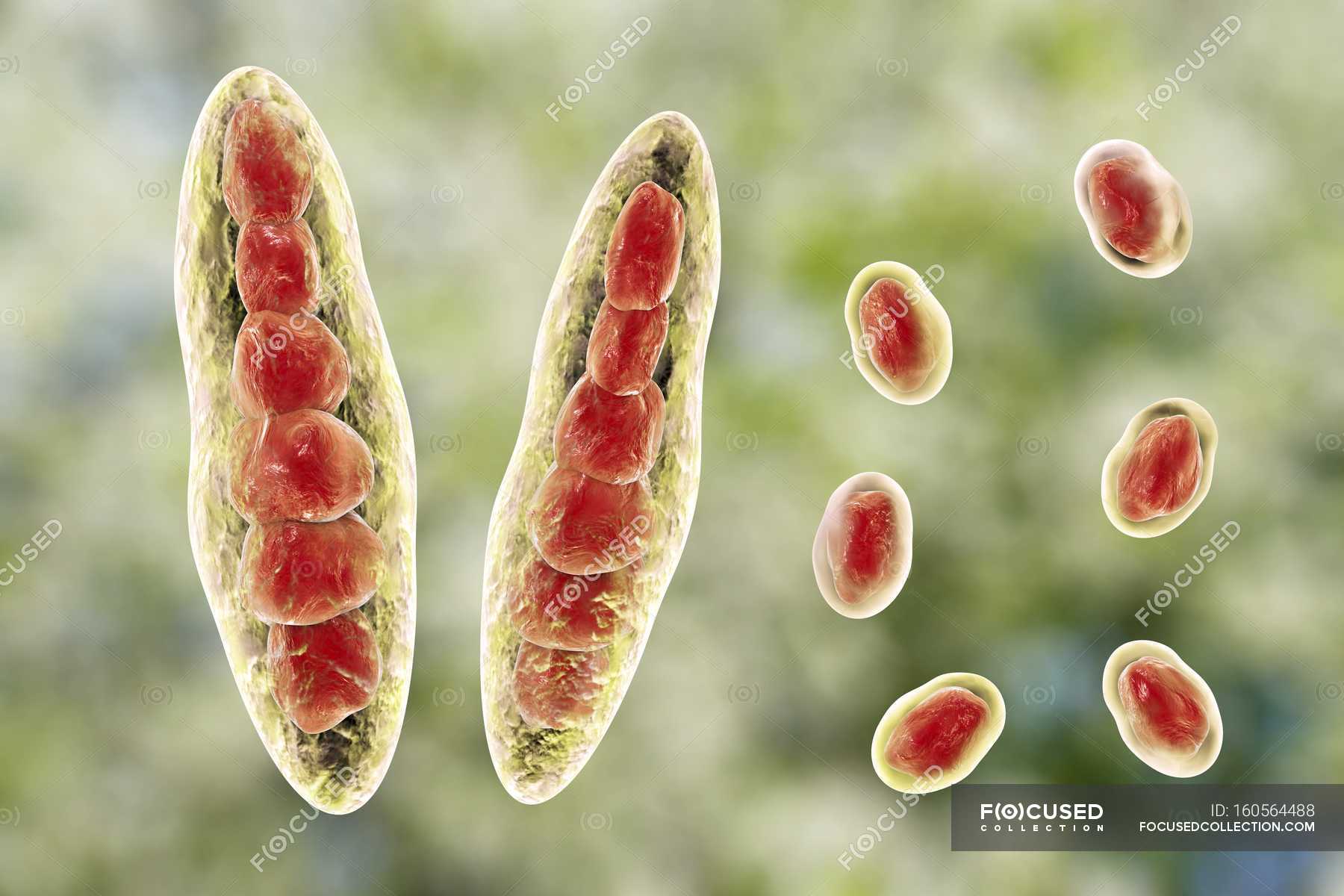 Contributed by Mark A. Dreyer, DPM, FACFAS
Contributed by Mark A. Dreyer, DPM, FACFAS
References
- 1.
Becker BA, Childress MA. Common Foot Problems: Over-the-Counter Treatments and Home Care. Am Fam Physician. 2018 Sep 01;98(5):298-303. [PubMed: 30216025]
- 2.
Clebak KT, Malone MA. Skin Infections. Prim Care. 2018 Sep;45(3):433-454. [PubMed: 30115333]
- 3.
Rajagopalan M, Inamadar A, Mittal A, Miskeen AK, Srinivas CR, Sardana K, Godse K, Patel K, Rengasamy M, Rudramurthy S, Dogra S. Expert Consensus on The Management of Dermatophytosis in India (ECTODERM India). BMC Dermatol. 2018 Jul 24;18(1):6. [PMC free article: PMC6057051] [PubMed: 30041646]
- 4.
Lipner SR, Scher RK. Onychomycosis: Clinical overview and diagnosis. J Am Acad Dermatol. 2019 Apr;80(4):835-851. [PubMed: 29959961]
- 5.
Wang R, Song Y, Du M, Yang E, Yu J, Wan Z, Li R. Skin microbiome changes in patients with interdigital tinea pedis. Br J Dermatol. 2018 Oct;179(4):965-968.
 [PubMed: 29704463]
[PubMed: 29704463]- 6.
Mazza M, Refojo N, Davel G, Lima N, Dias N, Passos da Silva CMF, Canteros CE., Mycology Network of the Province of Buenos Aires (MNPBA). Epidemiology of dermatophytoses in 31 municipalities of the province of Buenos Aires, Argentina: A 6-year study. Rev Iberoam Micol. 2018 Apr-Jun;35(2):97-102. [PubMed: 29606407]
- 7.
Tsunemi Y, Takehara K, Miura Y, Nakagami G, Sanada H, Kawashima M. Specimens processed with an extraction solution of the Dermatophyte Test Strip can be used for direct microscopy. Br J Dermatol. 2017 Sep;177(3):e50-e51. [PubMed: 27943256]
- 8.
Vlahovic TC. Onychomycosis: Evaluation, Treatment Options, Managing Recurrence, and Patient Outcomes. Clin Podiatr Med Surg. 2016 Jul;33(3):305-18. [PubMed: 27215153]
- 9.
Drago L, Micali G, Papini M, Piraccini BM, Veraldi S. Management of mycoses in daily practice. G Ital Dermatol Venereol. 2017 Dec;152(6):642-650. [PubMed: 29050446]
- 10.

Sahoo AK, Mahajan R. Management of tinea corporis, tinea cruris, and tinea pedis: A comprehensive review. Indian Dermatol Online J. 2016 Mar-Apr;7(2):77-86. [PMC free article: PMC4804599] [PubMed: 27057486]
- 11.
Taheri A, Davis SA, Huang KE, Feldman SR. Onychomycosis treatment in the United States. Cutis. 2015 May;95(5):E15-21. [PubMed: 26057514]
- 12.
Ilkit M, Durdu M. Tinea pedis: the etiology and global epidemiology of a common fungal infection. Crit Rev Microbiol. 2015;41(3):374-88. [PubMed: 24495093]
- 13.
Bowman J. Investigate all the options in skin care. Prof Nurse. 2004 Jul;19(11):43. [PubMed: 15317339]
- 14.
Al Balushi KA, Alzaabi MA, Alghafri F. Prescribing Pattern of Antifungal Medications at a Tertiary Care Hospital in Oman. J Clin Diagn Res. 2016 Dec;10(12):FC27-FC30. [PMC free article: PMC5296449] [PubMed: 28208876]
- 15.
Del Rosso JQ. Onychomycosis of Toenails and Post-hoc Analyses with Efinaconazole 10% Solution Once-daily Treatment: Impact of Disease Severity and Other Concomitant Associated Factors on Selection of Therapy and Therapeutic Outcomes.
 J Clin Aesthet Dermatol. 2016 Feb;9(2):42-7. [PMC free article: PMC4771389] [PubMed: 27047631]
J Clin Aesthet Dermatol. 2016 Feb;9(2):42-7. [PMC free article: PMC4771389] [PubMed: 27047631]
Disclosure: Pramod Nigam declares no relevant financial relationships with ineligible companies.
Disclosure: Dahlia Saleh declares no relevant financial relationships with ineligible companies.
Tinea Infections: Athlete’s Foot, Jock Itch and Ringworm
Am Fam Physician. 1998;58(1):177-178
See related article on tinea infections.
What is tinea?
Tinea is a fungus that can grow on your skin, hair or nails. As it grows, it spreads out in a circle, leaving normal-appearing skin in the middle. This makes it look like a ring. At the edge of the ring, the skin is lifted up by the irritation and looks red and scaly. To some people, the infection looks like a “worm” is under the skin. Because of the way it looks, tinea infection is often called “ringworm.” There really isn’t a worm under the skin, though.
As it grows, it spreads out in a circle, leaving normal-appearing skin in the middle. This makes it look like a ring. At the edge of the ring, the skin is lifted up by the irritation and looks red and scaly. To some people, the infection looks like a “worm” is under the skin. Because of the way it looks, tinea infection is often called “ringworm.” There really isn’t a worm under the skin, though.
How did I get tinea?
One of every five persons gets a fungus infection at some time. You can get a fungus infection by touching a person who has one. Some kinds of fungus live on damp surfaces, like the floors in public showers or locker rooms. You can easily pick up a fungus there. You can even catch a fungus infection from one of your pets. Dogs and cats, as well as farm animals, can be infected with a fungus. Often this infection looks like a patch of skin where fur is missing.
What areas of the body are affected by tinea infections?
Fungus infections are named for the part of the body they infect.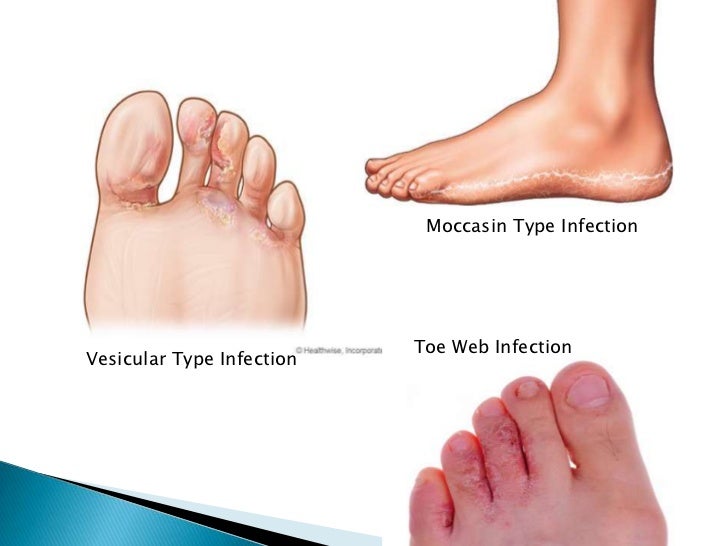 Tinea corporis is a fungus infection of the skin on the body (corporis is the Latin word for body). If you have this infection, you may see small, red spots that grow into large rings almost anywhere on your arms, legs or chest.
Tinea corporis is a fungus infection of the skin on the body (corporis is the Latin word for body). If you have this infection, you may see small, red spots that grow into large rings almost anywhere on your arms, legs or chest.
Tinea pedis is usually called “athlete’s foot.” (Pedis is a Latin word for foot.) The moist skin between your toes is a perfect place for a fungus to grow. The skin can become itchy and red, with a white, wet surface. The infection may spread to the toenails (this is called tinea unguium—unguium comes from the Latin word for nail). Here it causes the toenails to become thick and crumbly. It can also spread to your hands and fingernails.
When a fungus grows in the moist, warm area of the groin, the rash is called tinea cruris. (Cruris comes from the Latin for leg.) The common name for this infection is “jock itch.” Tinea cruris often occurs in men, especially if they often wear athletic equipment.
Tinea capitis, which is usually called “ringworm,” causes itchy, red areas, usually on the head (capitis comes from the Latin for head). The hair is destroyed, leaving bald patches. This tinea infection is most common in children.
The hair is destroyed, leaving bald patches. This tinea infection is most common in children.
How do I know if I have a fungus infection?
The best way to know for sure is to ask your doctor. Other skin problems can look just like ringworm but have very different treatments. To help decide what is causing your rash, your doctor may scrape a small amount of the irritated skin onto a glass slide (or clip off a piece of nail or hair) and then examine the skin, nail or hair under a microscope. After doing this, your doctor will usually be able to tell if your skin problem is caused by a fungus.
Sometimes a piece of skin, hair or nail is sent to a laboratory to grow the fungus in a test tube. This is another way the laboratory can tell if your skin problem is caused by a fungus. They can also find out the exact type of fungus. This process takes a while because a fungus grows slowly.
How do I get rid of tinea?
Once your doctor decides that you have a fungus infection, different medicines can be used to get rid of it. You may only need to put a special cream on the rash for a few weeks. This is especially true with jock itch.
You may only need to put a special cream on the rash for a few weeks. This is especially true with jock itch.
It can be harder to get rid of fungus infections on other parts of the body. Sometimes you have to take medicine by mouth. This medicine usually has to be taken for a long time, maybe even for months. Some fungus medicines can have unpleasant effects on the rest of your body, especially if you’re also taking other medicines. There are some newer fungus medicines that seem to work better with fewer side effects. You may need to have blood tests to make sure that your body is not having a bad reaction to the fungus medicine. It may take a few months or more to get better. Irritated skin takes time to heal. New hair or nails will have to grow back.
What can I do to prevent tinea infections?
Skin that is kept clean and dry is your best defense. However, you’re also less likely to get a tinea infection if you do the following things:
When you’re at home, take your shoes off and expose your feet to the air.

Change your socks and underwear every day, especially in warm weather.
Dry your feet carefully (especially between the toes) after using a locker room or public shower.
Avoid walking barefoot in public areas. Instead, wear “flip-flops,” sandals or water shoes.
Try not to wear thick clothing for long periods of time in warm weather.
This makes you sweat more.
Throw away worn-out exercise shoes. Never borrow other people’s shoes.
Check your pets for areas of hair loss. Ask your veterinarian to check them too. It’s important to check pets carefully, because if you don’t find out what is causing your fungus infection, you may get it again, even after treatment.
Can tinea cause serious illness?
A fungus rarely spreads below the surface of the body. Your body usually prevents this. People with weak immune systems, like people with AIDS, may have a hard time getting well from a fungus infection, but they don’t usually have problems with ringworm. Tinea infections usually don’t leave scars after the fungus is gone. A lot of people don’t even know they have a fungus infection and get better without any treatment.
Tinea infections usually don’t leave scars after the fungus is gone. A lot of people don’t even know they have a fungus infection and get better without any treatment.
Ringworm in humans
Ringworm is a fungal and highly contagious disease caused by fungi Microsporum, Trichophyton, etc. You can become infected with ringworm only through direct contact with the carrier of the fungus – pets, a person suffering from this disease, household appliances, toys. At the same time, in a person who has become infected from an animal, the process of treating ringworm takes much longer, and the disease itself proceeds in a more severe form. Most often, ringworm in humans affects the scalp and scalp. Much less often, the disease appears on the eyelashes, feet and nails. According to statistics, it is children who most often suffer from this disease and are carriers of the fungus.
– appearance of red spots on human skin.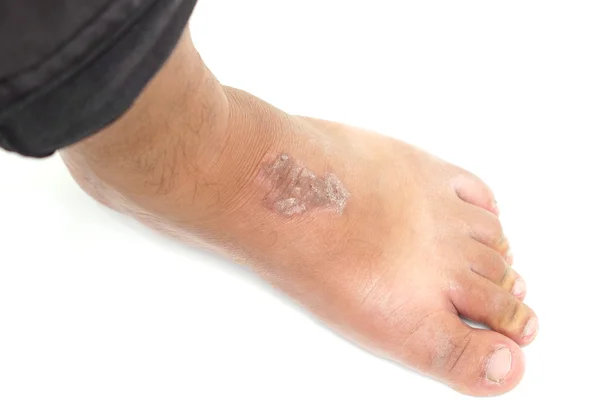 Spots, initially covered with a crust or scales, eventually become covered with tiny bubbles. In places where the spots are localized, there is severe itching;
Spots, initially covered with a crust or scales, eventually become covered with tiny bubbles. In places where the spots are localized, there is severe itching;
– the appearance of rounded bald spots in the hair. The hair in these places is very thin and short;
– deterioration of hair health in general;
– thickening and delamination of the nail plate;
– with weak immunity, weakness, headache or fever may occur.
Due to the fact that each organism is individual and reacts to the fungus in completely different ways, there are several forms of ringworm in humans :
1. In the papular-squamous form, lichen appears on the chest or face;
2. In the abortive form, the symptoms of the disease are mild. On the skin, only pale foci of localization of the fungus can be observed, which do not have clear boundaries;
3. When the palms and feet are affected, dry plaques are observed, similar in appearance to ordinary corns;
4. The erythematous-edematous form most often occurs in children. Severe inflammation occurs at the site of the spots. Often this form of the disease is accompanied by allergies;
The erythematous-edematous form most often occurs in children. Severe inflammation occurs at the site of the spots. Often this form of the disease is accompanied by allergies;
5. When the form is deep, subcutaneous nodes appear on the legs. As a rule, women get sick with this form of lichen;
6. Microsporic onychomycosis affects the nail plate. The nail is covered with dull spots, becomes brittle and collapses over time;
7. Suppurative-infiltrative form is considered the most severe form of the disease. It is characterized by swollen dense plaques, severe itching and purulent discharge.
To combat ringworm in a person, the doctor prescribes medication to the patient with external and internal antifungal drugs with the active ingredient Ketoconazole , Terbinafine , Clotrimazole , Mikoseptin . For deep lesions of the skin, hair or nails, apply Griseofulvin .
As a rule, with complex and correct treatment, the disease recedes after a few weeks. To prevent the occurrence of repeated plaques, it is recommended to complete the entire course of treatment to the end. Also, the patient is prescribed a special diet, including vegetables, meat, fruits, milk and sour-milk drinks.
The material is for informational purposes only. Medicinal products, biologically active supplements and other products are indicated as an example of their possible use and / or application, which in no way constitutes a recommendation for their use. Before using drugs, dietary supplements and medical equipment and other products, be sure to consult a specialist.
How to diagnose ringworm – advice from a dermatologist
How to diagnose ringworm – advice from a dermatologist
Recording 24/7
Find the center and
write down for diagnostics
+7(812)209-29-49
How to diagnose Ringworm: Ringworm is a common fungal infection. The initial diagnosis of ringworm will require a consultation with a dermatologist.
Quick navigation
Symptoms of ringworm
The main symptom of ringworm is a rash. It may appear red, silver, or darker than the surrounding skin. The rash may be scaly, dry, swollen, or itchy. Ringworm can appear anywhere on the body, including the scalp (tinea capitis) and groin (athlete’s itch). The rash is usually ring-shaped, but it may look different on the face, neck, or scalp. Sometimes the rash grows or more than one fungal lesion appears. Ringworm on the face or scalp can also cause patchy hair loss.
Ringworm on the face or scalp can also cause patchy hair loss.
Causes
Ringworm is caused by a fungus. It can be transmitted through close contact with:
- an infected person or animal
- an infected object, such as sheets, combs or towels.
- with infected soil – although this is less common.
Diagnosis of ringworm
The patient should consult a dermatologist if he observes in himself:
- Ringworm did not improve after using the antifungal medicine recommended by the pharmacist
- has ringworm on the scalp – usually the patient will need prescription antifungal tablets and shampoo
- a weakened immune system – for example, due to chemotherapy, steroids or diabetes.

Treatment
Treatment of ringworm will require the use of antifungal drugs. To stop the spread of lichen you should:
- start treatment as soon as possible
- wash towels and sheets regularly
- keep skin clean
- wash hands after touching animals
- Check your skin regularly if you have been in contact with an infected person or animal
- contact your veterinarian if your pet may have ringworm
- do not share towels, combs or linens with people who have ringworm
- do not scratch ringworm rash – it can spread to other parts of the body.
Author: Makarova Ksenia Nikolaevna
Specialization: Dermatologist
Where does the appointment: Mirramed Aesthetic Medicine Center
Share: 9 0003
The best specialists in St. Petersburg with a rating of 4.5+
Bortuleva Victoria Valerievna
Specialization: Dermatologist
Medical experience: since 2006
Where does the appointment: Infectious clinic ID-Clinic, Center for Medical Mycology.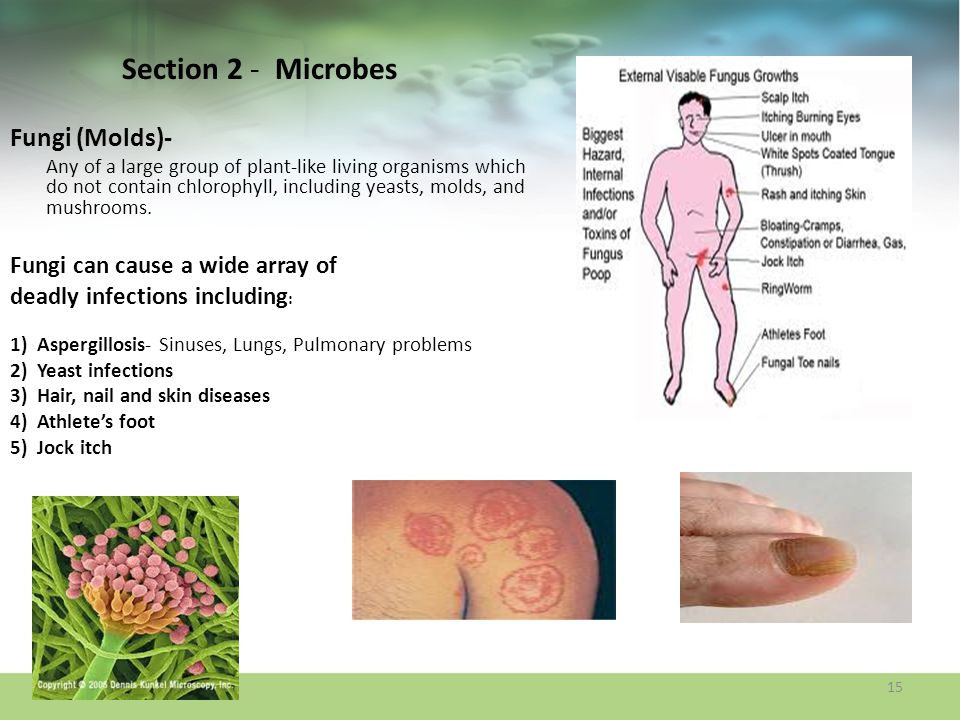 Kashkin
Kashkin
Kozminsky Evgeny Borisovich
Specialization: Dermatologist
Medical experience: since 1997
Where does the appointment: ID-Clinic Infectious Diseases Clinic, City Department of Internal Affairs
Podkovyrkina Alena Anatolyevna
Specialization: Dermatologist, Trichologist
Medical experience: since 2013
Where does the reception: MC Baltmed Ozerki
Volnitsky Ivan Vasilyevich
Specialization: Dermatologist, Trichologist
Medical experience: since 2012
Where does the appointment: MC Baltmed Ozerki, Cosmetology Equigene
Kutkovich Andrey Vladimirovich
Specialization: Oncologist, Dermatologist, Mammologist, Surgeon
Medical experience: since 2010
Where does the appointment: MC Baltmed Ozerki, CDC 78, Department of Early Diagnosis and Cancer Prevention
Popov Petr Vasilyevich
Specialization: Dermatologist, Trichologist
Medical experience: since 2002
Where does the reception: MC Baltmed Ozerki
Borisov Sergey Vladimirovich
Specialization: Oncologist, Dermatologist, Mammologist, Surgeon
Medical experience: since 1987
Where does the appointment: Baltmed Ozerki clinic, MEDIKA Gzhatskaya clinic, Poema Zdorovya Clinic
Lysova Valentina Yurievna
Specialization: Dermatologist
Medical experience: since 2015
Where does the reception: MC Baltmed Ozerki
Narchaeva Selbi Agaevna
Specialization: Dermatologist
Medical experience: since 2001
Where does the reception: MC Baltmed Ozerki, MC Dynasty Lenina
Khostikoeva Kamilla Kazbekovna
Specialization: Dermatologist
Medical experience: since 2018
Where does the reception: MC Baltmed Ozerki
Shtylina Julia Vadimovna
Specialization: Dermatologist
Medical experience: since 2016
Where does the reception: MC Medicenter
Starkov Sergey Viktorovich
Specialization: Dermatologist
Medical experience: since 2004
Where does the reception: MC Medicenter
Pivak Anastasia Viktorovna
Specialization: Dermatologist
Medical experience: since 2018
Where does the reception: MC Medicenter
Shvyrev Denis Nikolaevich
Specialization: Dermatologist
Medical experience: since 2012
Where does the reception: MC Medpomoshch 24 Zanevsky
Maya Semyonova
Specialization: Dermatologist
Medical experience: since 2003
Where does the reception: MC Medpomoshch 24 Balkan
Makovei Yana Nikolaevna
Specialization: Dermatologist
Medical experience: since 2013
Where does the reception: MC Medpomoshch 24 Balkansky, MC REMEDY, MC AsMedia Chernyshevsky
Sokolov Grigory Nikitich
Specialization: Dermatologist
Medical experience: since 1998
Where does the reception: MC March
Balaban Olga Ivanovna
Specialization: Dermatologist
Medical experience: since 2009
Where does the reception: MC Energo Kyiv
Gordienko Leonid Alekseevich
Specialization: Dermatologist
Medical experience: since 1988
Where does the reception: MC Energy of Health, City Multidisciplinary Hospital No. 2
2
Vetlitsky Dmitry Anatolyevich
Specialization: Dermatologist
Medical experience: since 1989
Where does the reception: MC Longa Vita, ABIA on the Queen
Kudlak Oleg Viktorovich
Specialization: Dermatologist, Surgeon, Proctologist
Medical experience: since 2012
Where does the reception: MC Longa Vita, Medical On Group for Veterans
Yankelevich Elizaveta Ilyinichna
Specialization: Dermatologist
Medical experience: since 2015
Where does the reception: MC Longa Vita
Litenev Leonid Andreevich
Specialization: Dermatologist
Medical experience: since 2016
Where does the appointment: SM-Clinic on Marshal Zakharov, SM-Clinic on Vyborgsky
Smirnov Konstantin Valerievich
Specialization: Dermatologist
Medical experience: since 1999
Where does the reception: SM-Clinic on Malaya Balkanskaya
Pisarenko Natalia Leonidovna
Specialization: Dermatologist
Medical experience: since 1996
Where does the reception: SM-Clinic on Udarnikov
Kolesnikova Ekaterina Vladimirovna
Specialization: Dermatologist
Medical experience: since 2016
Where does the appointment: SM-Clinic on Marshal Zakharov, MEDSI Clinic St.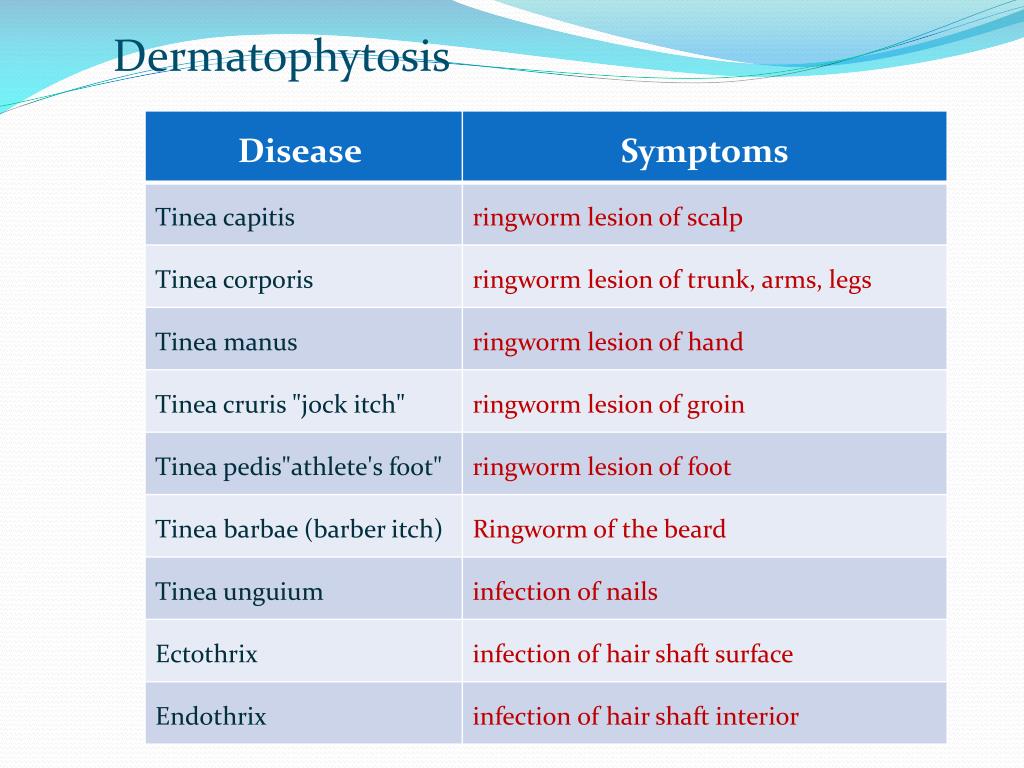 Petersburg
Petersburg
Protopopov Daniil Olegovich
Specialization: Dermatologist
Medical experience: since 2014
Where does the appointment: SM-Clinic on Udarnikov, SM-Clinic on Danube
Ibragimov Grigory Yurievich
Specialization: Dermatologist
Medical experience: since 1989
Where does the appointment: SM-Clinic on Danube, SM-Clinic on Malaya Balkanskaya, Desir Clinic on Moskovsky
Barbinov Denis Vyacheslavovich
Specialization: Dermatologist
Medical experience: since 2010
Where does the reception: SM-Clinic on Marshal Zakharov, SM-Clinic on Udarnikov
Galich Margarita Dmitrievna
Specialization: Dermatologist
Medical experience: since 2006
Where does the reception: SM-Clinic on Vyborgsky
Dyshko Larisa Anatolyevna
Specialization: Dermatologist
Medical experience: since 1999
Where does the reception: SM-Clinic on Danube
Zinovieva Tatyana Vladimirovna
Specialization: Dermatologist
Medical experience: since 2007
Where does the reception: SM-Clinic on Vyborgsky
Kurbanbayeva Gozel Bakhtiyarovna
Specialization: Dermatologist
Medical experience: since 2018
Where does the reception: SM-Clinic on Marshal Zakharov, SZTSDM on Bogatyrsky, LIK Cosmetology Center (LIK)
Lukyanchuk Maxim Vladimirovich
Specialization: Dermatologist
Medical experience: since 2017
Where does the appointment: SM-Clinic on Malaya Balkanskaya, Desir on Kolomyazhsky, Desir Clinic on Moskovsky
Mozgova Olga Viktorovna
Specialization: Dermatologist
Medical experience: since 1981
Where does the reception: SM-Clinic on Udarnikov
Romanova Alena Olegovna
Specialization: Dermatologist
Medical experience: since 2015
Where does the appointment: SM-Clinic on Vyborgsky, Clinic A-media
Semyachkov Sergey Viktorovich
Specialization: Dermatologist
Medical experience: since 2010
Where does the appointment: SM-Clinic on Vyborgsky, Podology Center on Petrogradskaya
Utkina Natalya Aleksandrovna
Specialization: Dermatologist
Medical experience: since 2003
Where does the reception: SM-Clinic on Vyborgsky
Khramovich Anastasia Vladimirovna
Specialization: Dermatologist
Medical experience: since 2011
Where does the reception: SM-Clinic on Malaya Balkanskaya
Shurkus Inna Vladimirovna
Specialization: Dermatologist
Medical experience: since 1989
Where does the reception: SM-Clinic on Danube
References:
- Akimov V.
 G. Photodermatoses // Skin and venereal diseases: A guide for doctors / Ed. Yu.K. Skripkina. M.: Medicine, 1995. – V.2. -p.341-365.
G. Photodermatoses // Skin and venereal diseases: A guide for doctors / Ed. Yu.K. Skripkina. M.: Medicine, 1995. – V.2. -p.341-365. - Dubensky V.V., Redko R.V., Garmonov A.A. Skin neoplasms in the practice of a dermatovenereologist / Ed. V.V.Dubensky. Tver: LLC Publishing House “Triada”, 2002. – 148 e .: ill.
- European guidelines for the treatment of dermatological diseases / Ed. A.D. Katsambasa, T.M. Lotti: Per. from English. M.: MEDpress-inform, 2008. – 736 e.: ill.
- Playfair D. Visual immunology. M.: Medicine. – 1999. -S. 32-41.
- Tarshis M.G., Zhukov S.E. Animal diseases dangerous to humans-M.: Kolos, 1997-113 p.
- Fitzpatrick T., Johnson R., Wulf K. et al. Dermatology: Atlas Handbook / Per. from English. M.: Practice, 1999. – 1088 p.
Latest diagnostic articles
Polymorphic light rash
Polymorphic light rash is a fairly common skin rash caused by exposure to sunlight or artificial ultraviolet (UV) light.

 [PubMed: 29704463]
[PubMed: 29704463]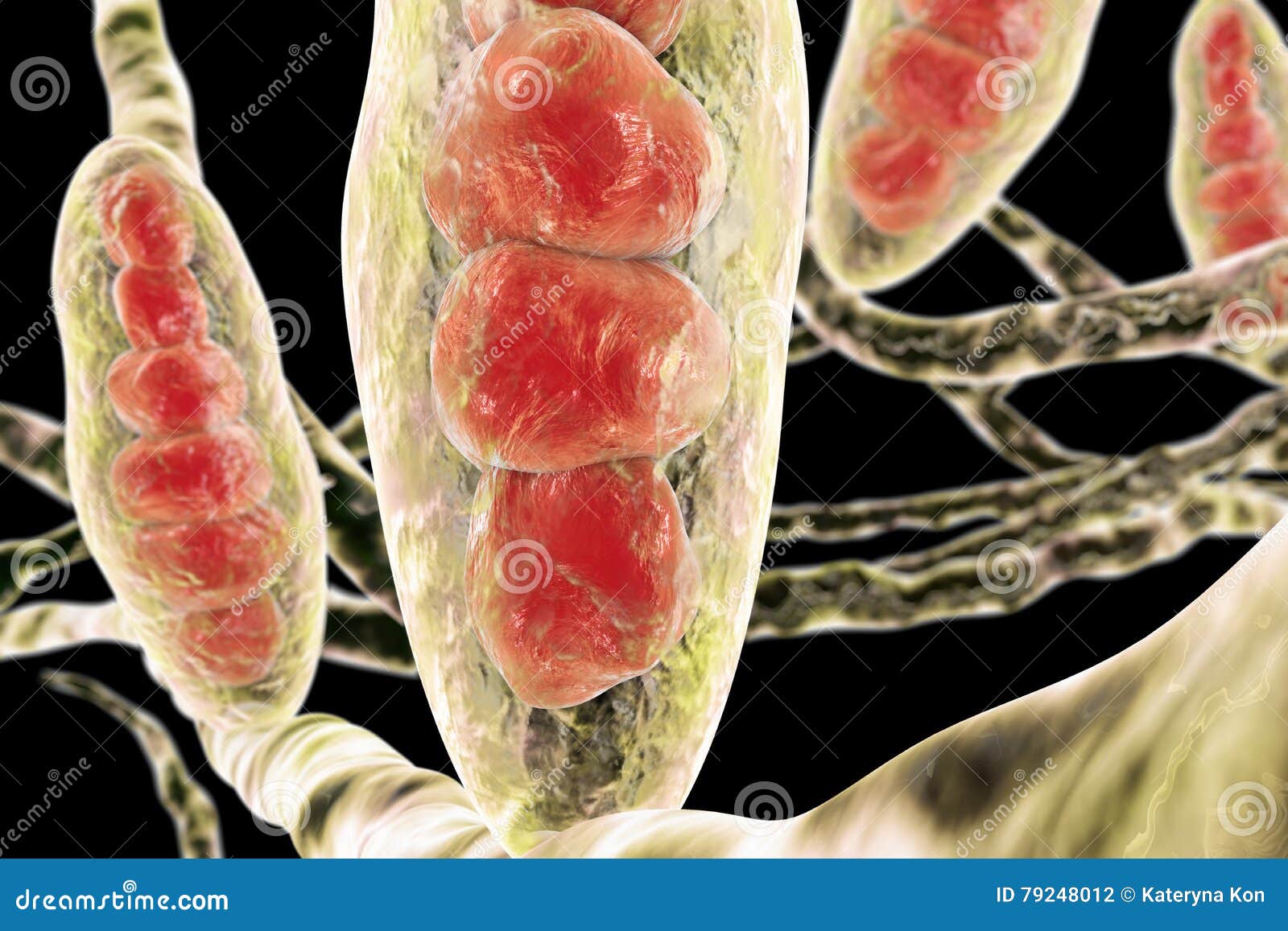
 J Clin Aesthet Dermatol. 2016 Feb;9(2):42-7. [PMC free article: PMC4771389] [PubMed: 27047631]
J Clin Aesthet Dermatol. 2016 Feb;9(2):42-7. [PMC free article: PMC4771389] [PubMed: 27047631]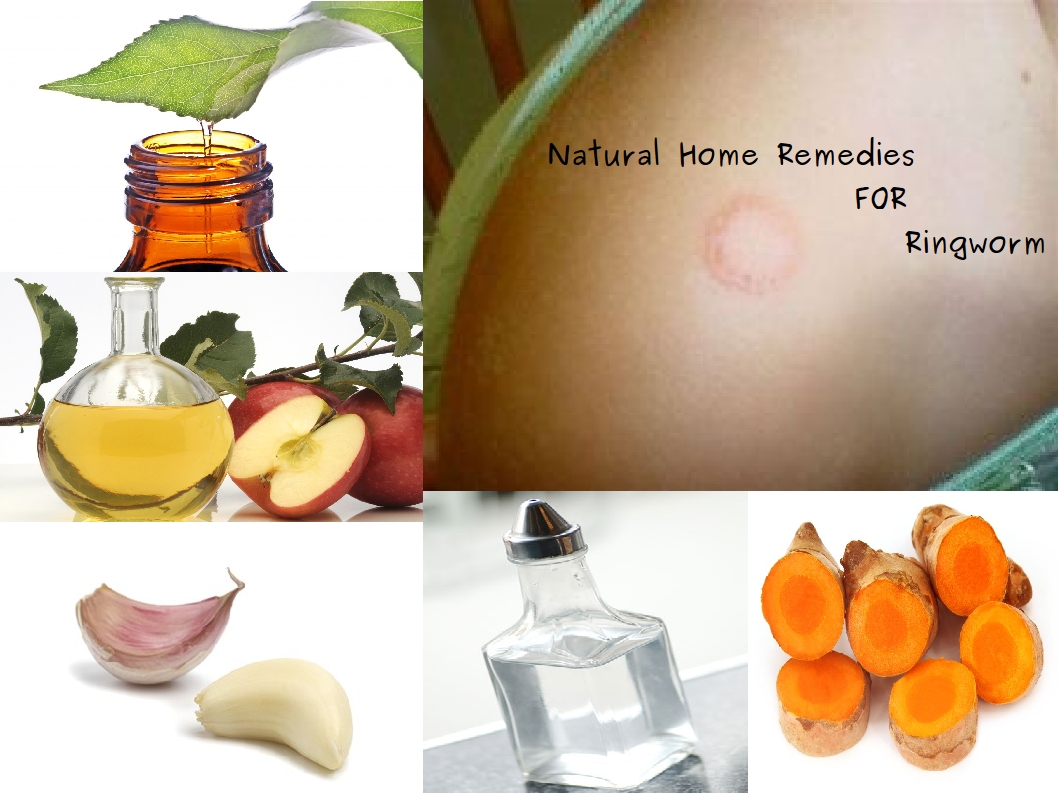

/ringworm-overview-2632044_FINAL-e1669cad90b347b981a4c1ae42865fcc.png) G. Photodermatoses // Skin and venereal diseases: A guide for doctors / Ed. Yu.K. Skripkina. M.: Medicine, 1995. – V.2. -p.341-365.
G. Photodermatoses // Skin and venereal diseases: A guide for doctors / Ed. Yu.K. Skripkina. M.: Medicine, 1995. – V.2. -p.341-365.